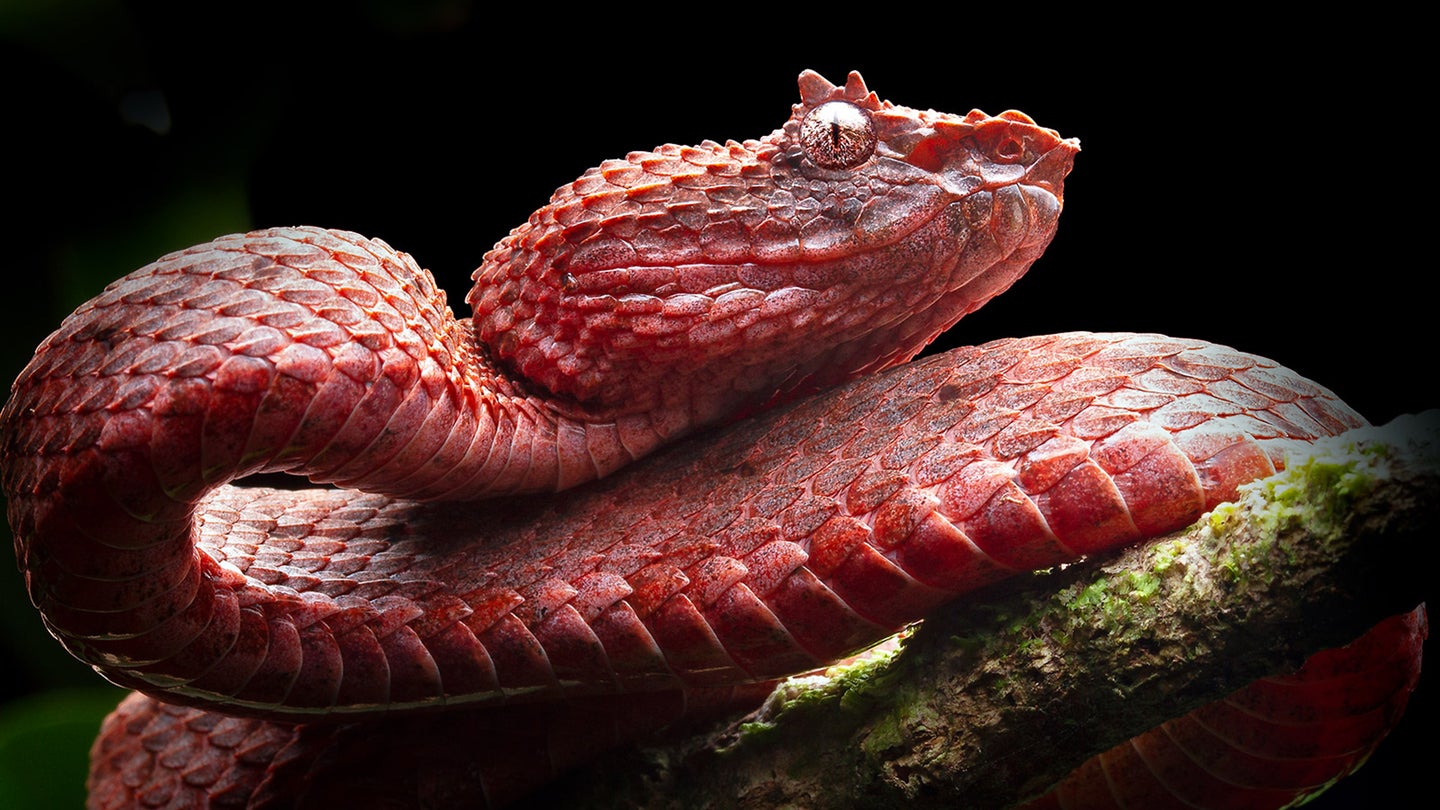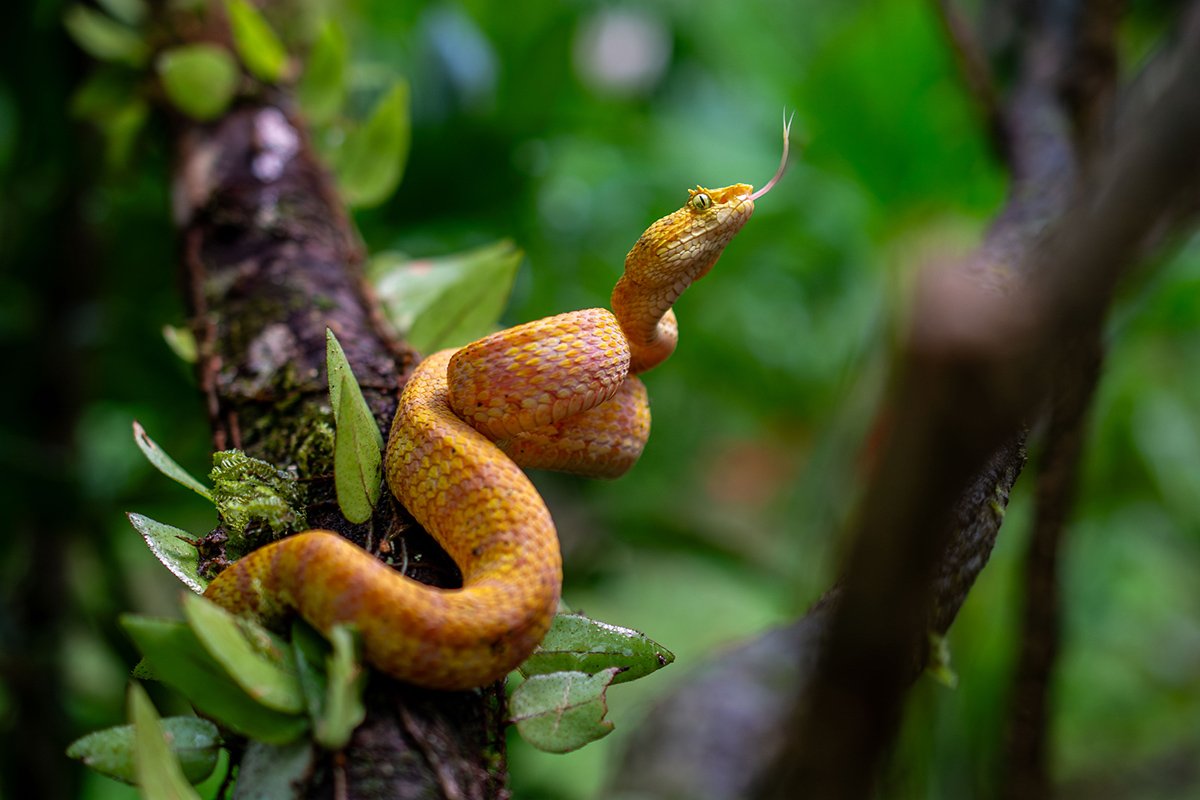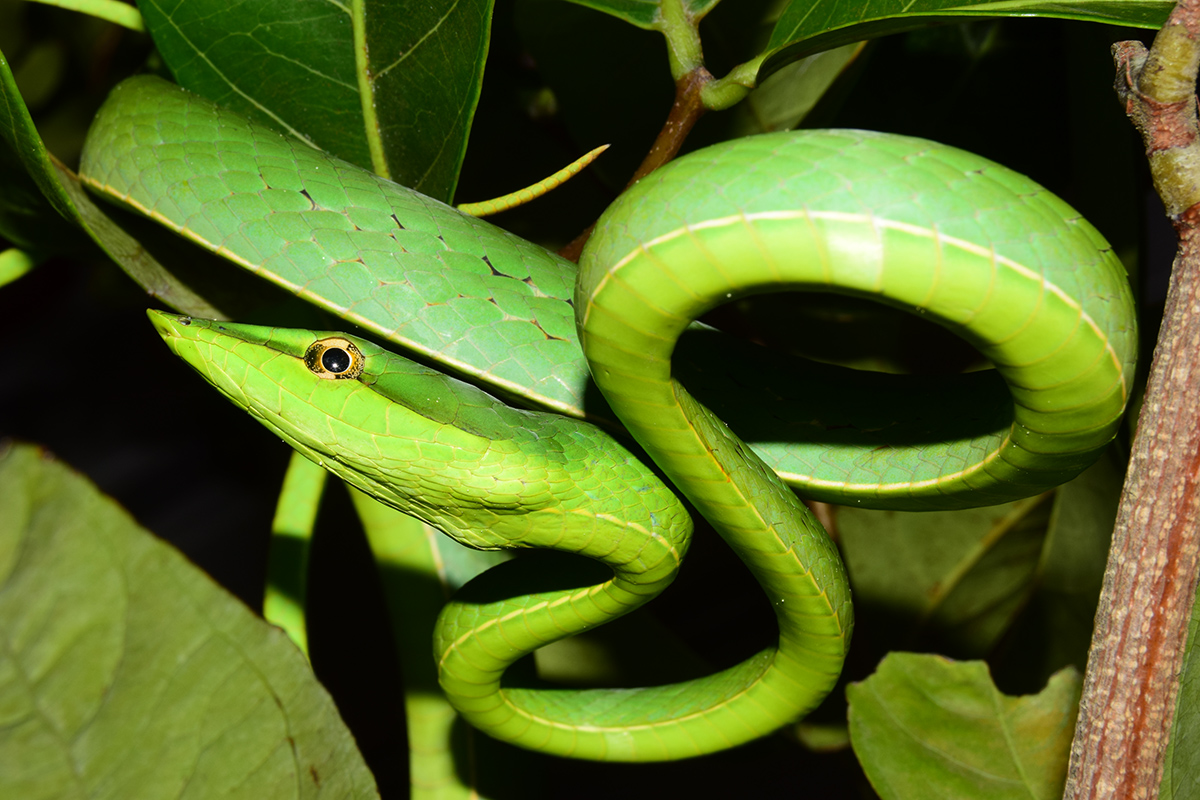
In a square-rectangle sort of way, snakes are technically lizards, but for semantics’ sake and because snakes are so distinctive, biologists separate snakes and lizards into different categories. Despite being nested within the same branch of the tree of life, legless, lengthy, and slithering snakes–capable of unhinging their jaws and delivering a venomous bite–stand out from their reptilian clade-mates. New research sheds light on just how unique snakes are, and underscores an enduring mystery.
The singularity of snakes
There are about 4,000 known, living species of snakes that make up one-eighth of all terrestrial vertebrate diversity. Snakes thrive in an amazing array of different habitats and under wildly varying conditions, as tree-climbers, burrowers, swimmers, and even gliders. No single trait can explain the origins of all that diversity, according to a study published February 22 in Science.
“Snakes are special and weird.”
Instead, it all comes down to what the researchers call a “singularity of snakes.” In broad terms, a singularity is when small and unpredictable changes add up to big, unexpected outcomes. In physics, a singularity is a point in reality where the rules break down, and rapid expansion of the fabric of space-time can occur. The big bang theory posits that our entire universe emerged from such a singularity. In biology, a singularity might happen when an explosion of species stems from a series of changes clustered so tightly together as to appear instantaneous and inseparable on the order of evolutionary time.
All the many species of snakes are the result of a biological singularity event, according to the new research.

Thinking of evolution in terms of singularities is a perspective shift for a field where processes are generally understood to unfold incrementally and slowly. The emergence of new species is usually explained as happening on islands through geographic separation, or as the result of drawn out predator-prey interactions, or emerging from disease pressure over time. All of these things still happen and are important for understanding evolution, but snakes (and similarly diverse animal groups like rodents and passerine birds) suggest that maybe big, sudden jumps are part of how the tree of life has grown too. Sometimes, life moves quickly.
Snake explosion
The new research shows that snakes are “fundamentally evolving at a very fast rate,” says Daniel Rabosky, senior study author and a ecology and evolutionary biology professor at the University of Michigan. “Lizards are kind of on the evolutionary moped or go-kart in terms of how fast they are changing. But snakes are on the bullet train,” he explains. Through this speed, “snakes have been able to diversify into lots of different ecological ways of life, more so than many other groups of animals,” Rabosky adds. Though what, exactly, has enabled snakes to evolutionarily outpace other reptiles remains unresolved. The proliferation of snakes was likely spurred by many lucky changes occurring in rapid succession. And because the snake singularity only happened once, it’s nearly impossible to parse out the relative effects of one trait from the other and unknowns remain, Rabosky says. Nonetheless, the study offers some interesting insights.
“Lizards are kind of on the evolutionary moped or go-kart in terms of how fast they are changing. But snakes are on the bullet train.”
Using new genetic sequences from more than 1,000 species and additional existing data from nearly 7,000 reptile species, the researchers constructed one of the most detailed ever evolutionary trees of lizards and snakes, which together are known as squamates. Their phylogenetic map confirmed that snakes are evolving into new ecological niches and physical forms about three times faster than other squamates, and that most of that evolution has occurred over the past 70 to 100 million years or so.

And this multiplication of snakes is still ongoing, says Rabosky. There’s no sign that things are slowing down anytime soon, he emphasizes, and there’s likely lots out there left to discover. Indeed, scientists are finding new species of snakes all the time. In one example from earlier this month, biologists uncovered that the largest known species of snake, the green anaconda, is actually two genetically distinct species.
Separating the snakes from lizards
Many groups of non-snake lizards have independently evolved some snake-like traits. There are legless lizards, elongated lizards, venomous lizards, lizards with specialized skulls and highly flexible jaws, and lizards that can smell similarly to snakes. Yet despite this, the researchers found that none of these other lizard groups have diversified or evolved at anywhere near the rate that snakes have. “There are lots of notable features in snakes, but they’re not necessarily unique to snakes,” says Pascal Title, lead study author and an assistant professor of evolutionary biology and ecology at Stony Brook University. And at the same time, “we don’t see a consistent cause and effect of any one trait appearing and then leading to lots of reptile species.”
Based on nearly 70,000 observations of individual animals’ stomach contents, the researchers analyzed the difference between snake and lizard diets. They did find that snakes feed much more heavily on vertebrates, where lizards tend to eat insects and other invertebrates. Additionally, snakes specialize on food sources, while lizards are more likely to be generalists, according to the study. Still though, the dietary differences alone aren’t sufficient to explain what makes snakes so evolutionary adept.

“Snakes are special and weird,” says Nick Longrich, an evolutionary biologist and paleontologist at the University of Bath in the UK who has previously researched snakes’ diversification but was uninvolved in the new study. “I think that, here, they’ve successfully quantified it”.
Sara Ruane, a herpetologist and assistant curator at the Field Museum in Chicago, agrees that the new study breaks ground. “The amount of natural history information collated and sheer number of species [referenced here] is remarkable,” she says. It’s “an exciting way to better understand [snakes’] success on a global scale.” Plus, Ruane adds that many future studies of snakes and lizards are likely to come out of the impressive dataset.
Enduring unknowns
Yet despite their strides, the study authors are caught up on all the things we still don’t understand. Ten years of research and tens of thousands of samples has proven to Rabosky “how little we know about the basic biology of enormous fractions of life on Earth.” Even with all the work, digging back through museum collections and compiling genetic data, he says there are “entire chunks of the world” where we don’t know what species are present, in what numbers, and how they interact with each other, especially in the tropics. Title agrees. “There’s still a lot of species we just don’t have information for,” he says.
That deficit, Rabosky notes, means “we’re flying in the dark” when it comes to conservation, understanding the intricacies of ecosystems, and assessing human impacts on the world. To do better, he says “we need to massively upscale our efforts to collect basic information about what animals do in nature.” Snakes may be quick to evolve into new forms, but people could be haphazardly pruning those buds and branches off the tree of life before they’ve even been spotted.
The post Why are there so many snakes? appeared first on Popular Science.
Articles may contain affiliate links which enable us to share in the revenue of any purchases made.
from Popular Science https://ift.tt/2R31sVe



0 Comments